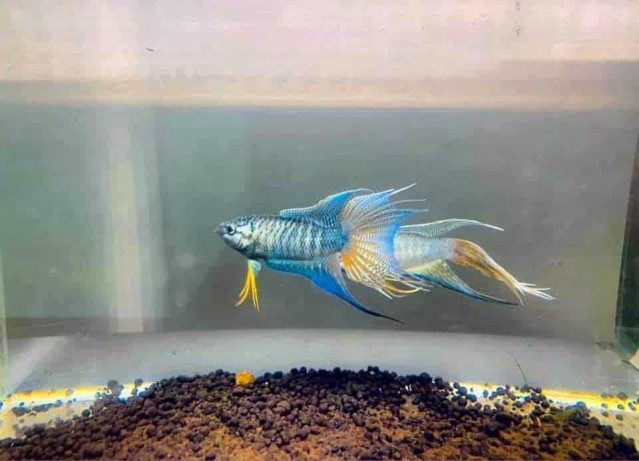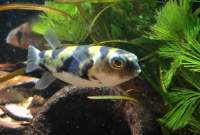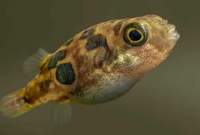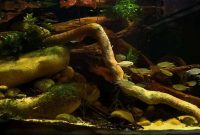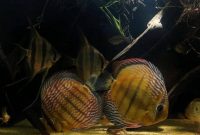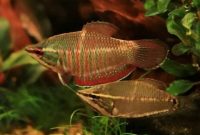Freshwater Paradise Gourami Complete Care Guide – Macropodus opercularis is a pretty tropical fish that many hobbyists are interested in. They are popular freshwater fish species known as paradise fish or paradise gourami. Like most other gourami types, these fish species belonging to the Osphronemidae family.
These gourami species native to East Asia, Korean Peninsula, and Northern Vietnam. Now, they are distributed to all countries globally and easily found in fish shops or online marketplace.
They can be found in river blackwater, lowland habitats, streams, rice paddies, irrigation canals, natural ponds, artificial reservoirs, and some populations inhabit upland hill streams in the wild. They are hardy and easiest fish and can be survived in a wide range of habitat types.
In 1869 Pierre Carbonnier (French aquarium fish importer) imported these gourami fish species to France and became the first ornamental fish available to the western aquarium keepers.
The paradise fish are quite aggressive, unlike their cousin dwarf gourami or honey gourami. They can be quite difficult to handle by beginner fish keepers with little experience.
Generally, they cost around $5 per fish in the fish shop and should not be too hard to find.
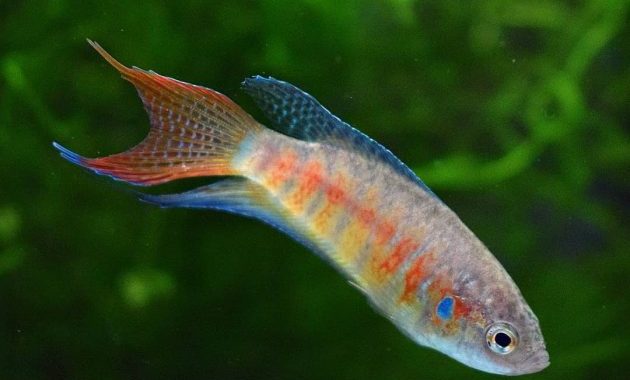
Freshwater Paradise Gourami Complete Care Guide
Paradise Gourami Appearance
M. Opercularis are colorful gourami fish types. They have red and vivid blue lines that run across their bodies, but their fins generally tend to have one color. Their caudal fins are usually orange.
Some paradise fish may have some small blue or black speckles spread across their bodies. Their color will usually intensify during the spawning, and the quality environment can also affect their coloration.
These tropical gourami species have tiny and thin ventral fins that extend out from them and dangle when they swim.
It’s not too hard to distinguish between males and females. The males are more colorful and larger. They also can spread longer anal or dorsal fins. The females tend to smaller, and their colors are duller. Females will grow bigger when storing their eggs.
The paradise gouramis have rounded heads with body-like torpedo and thin on the side. There are three separate varieties of paradise gourami but can be distinguishable by their tail shapes. Macropodus opercularis has a forked tail, Macropodus cupanus has a pointed tail with some rays extending from its middle, and Macropodus chinensis has a rounded tail.
Besides it, there are 2 genetically engineered varieties: albino macropodus (albino variety) and concolor variety. The albino variety has pink eyes and white, pink, and blue stripes. And another variety has darker colors.
They can grow to reach 2.6 inches (6.7 cm) in standard length, but mostly only around 2.2 inches (5.5 cm). In healthy environments, they can live up to 8-10 years.
Read Also: Chocolate Gourami “The Unique Mouthbrooding Gourami Species”
Paradise Gourami Behavior
Like other labyrinth fish types, they have labyrinth organs, which helps them get the air from the surface. Because they tend to swim in the aquarium’s middle and upper levels, you will see them reach the water surface many times to take a breath.
The behavior is different between individuals, but they are known as active animals and relatively social. As we know, they are quite aggressive gourami types, but it’s situational.

Buy Paradise Gourami Only On eBay
Fighting or aggression commonly focused between the same species, mostly between males and other males. But, sometimes, it happens with other species. The mating behaviors and territorial struggles usually become mainly problems. It can lead to health problems, and physical damage or maybe could be fatal.
Don’t worry, this behavior usually intermittent because these fish spend most of their time just swimming around the middle and upper levels in the tank.
Monitoring their habit regularly can become a good solution to minimalized their bad behavior between each other. Make sure you choose the right steps when seeing them in fighting.
When they are in fighting, their color frequently changes, usually showing dark blue lateral stripes on the side of their body. In the same situation, they also will extend their fins and spread out their operculum.
Read Also: The Ultimate Kissing Gourami Fish Care Sheet
Paradise Gourami Tank Setup And Care
The paradise gourami can be housed pair or community. You need at least 20 gallons for single fish. After that, you need 5 gallons for each fish you add. For example, you need a 30-gallon tank for 3 paradise fish. You need more than 30 gallons size for the community tank.
As labyrinth fish type, the type of substrate is not important. You can use fine sand types like flourite black sand, or gravel types as you want.
In their habitat, they prefer to inhabit plenty of vegetation areas. So, planting some aquarium plants in their house is necessary to make copies of their favorite environment. You can add hardy and easy aquarium plants like java moss, anubias, bolivian sword, or cryptocoryne. It can be used by them as a hiding or playing place.

Adding some floating plant types such as salvinia natans can offer more beneficial for them. Make sure to providing some free spaces at the surface to give them easily take breathe.
Use a high-quality filter system to keep the water conditions. The heater also will be needed to maintain the temperature constantly. Normal lighting is allowed, or you can use a dim lighting system.
Give more aesthetic value by putting some hardscape like driftwood, stone, or caves. It can also offer hiding places for these fish when they feel intimidated by other tankmates.
Some aquarists add air pumps to their tank, but it’s unnecessary because the paradise gouramis are hardy fish and can take the air directly to the water surface.
To maintain the quality water parameters, you should change the water around 25 % every couple of weeks. It can hold the nitrate levels close to zero and make your tank stay clean.
The best aquarium water conditions for paradise gourami is:
- Temperature: 10 – 22 °C
- pH level: 6.0 – 8.0
- Hardness: 5-30 DH
Read Also: Complete Tropical Pearl Gourami Fish Care Sheet
Paradise Gourami Tankmates
There are some requirements to decide their tankmates, remembered that they are a quite aggressive species. Their friends should be not aggressive too, do not larger or smaller, peaceful species, and the aquarium should be enough for the community tank.
You can put some other gourami species like a dwarf of pearls gourami. You can try kuhli/clown loaches and bristlenose catfish. The slow swimmers and long fins fish species must be avoided to put them together with these gourami species. It risks getting bitten by them.
Adding some snails or shrimps species is crucial. Some of them may be eaten by them, and others won’t.
Read Also: The Complete Guide To Keeping Sparkling Gourami Fish
Paradise Gourami Diet And Feeding
In the wild, they prey on insects, larvae, small fish, and other species similar to it. Macropodus Opercularis actually omnivorous and can accepts most foods. The fish food bought from stores like flakes and pellets can be accepted.
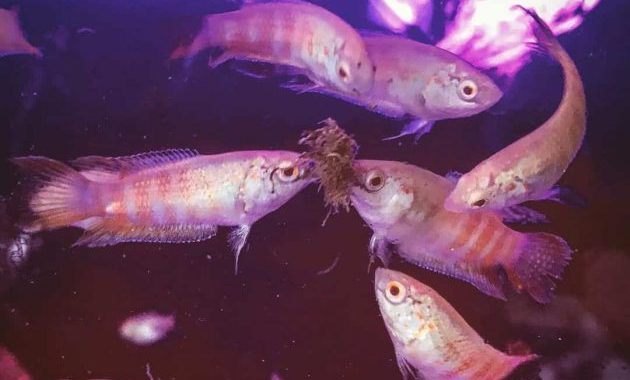
It is important to give them a high protein diet, and it got from live or frozen foods like brine shrimp, bloodworms, mosquito larvae, or frozen shrimp meats. Feed twice a day is enough for them. Make sure to remove any excess food to keep water quality stable.
Read Also: Dwarf Gourami Fish Tank Mates – List Of 9 The Best Friendly And Compatible Species
Paradise Gourami Breeding
Like other most tropical freshwater gourami types, M. Opercularis is a bubble nest builder. First, you should prepare a breeding tank around 20 gallons in size, including enough aquarium plants as spawning media and other equipment. Fill the water only about 6 – 8 inches and set the temperature at 80 to 84 degrees Fahrenheit. Feed live foods to both of them is recommended before spawning.
The male will start to create a bubble nest under some leafy plants before getting the female interested. Next, he will try to court the female by showing interesting displays. When the female gets interested in him, the male will wrap the female’s body similarly to betta when bred.
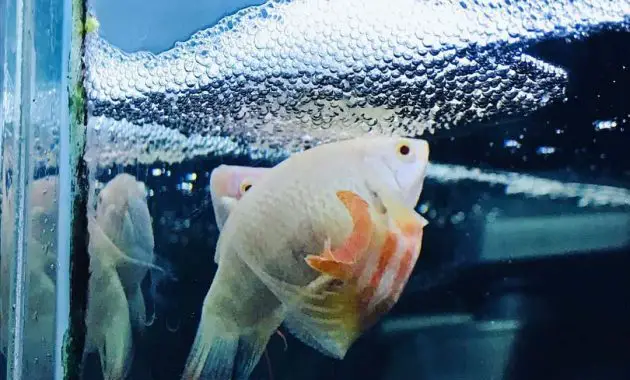
At the same time, females will release the eggs, and males fertilized them. He will collect the eggs and save them into the nest. This process will cycle many times until the female spends all her eggs.
Once the mating session is over, the male will become aggressive to the female, and you should remove her to prevent predation of the eggs. Now, males will guard the eggs until hatching. It will need 30-90 hours.
When the fry begins to swimming freely, you can move the male to another tank. The fry can be fed with infusoria or brine shrimp until they can accept larger foods.

